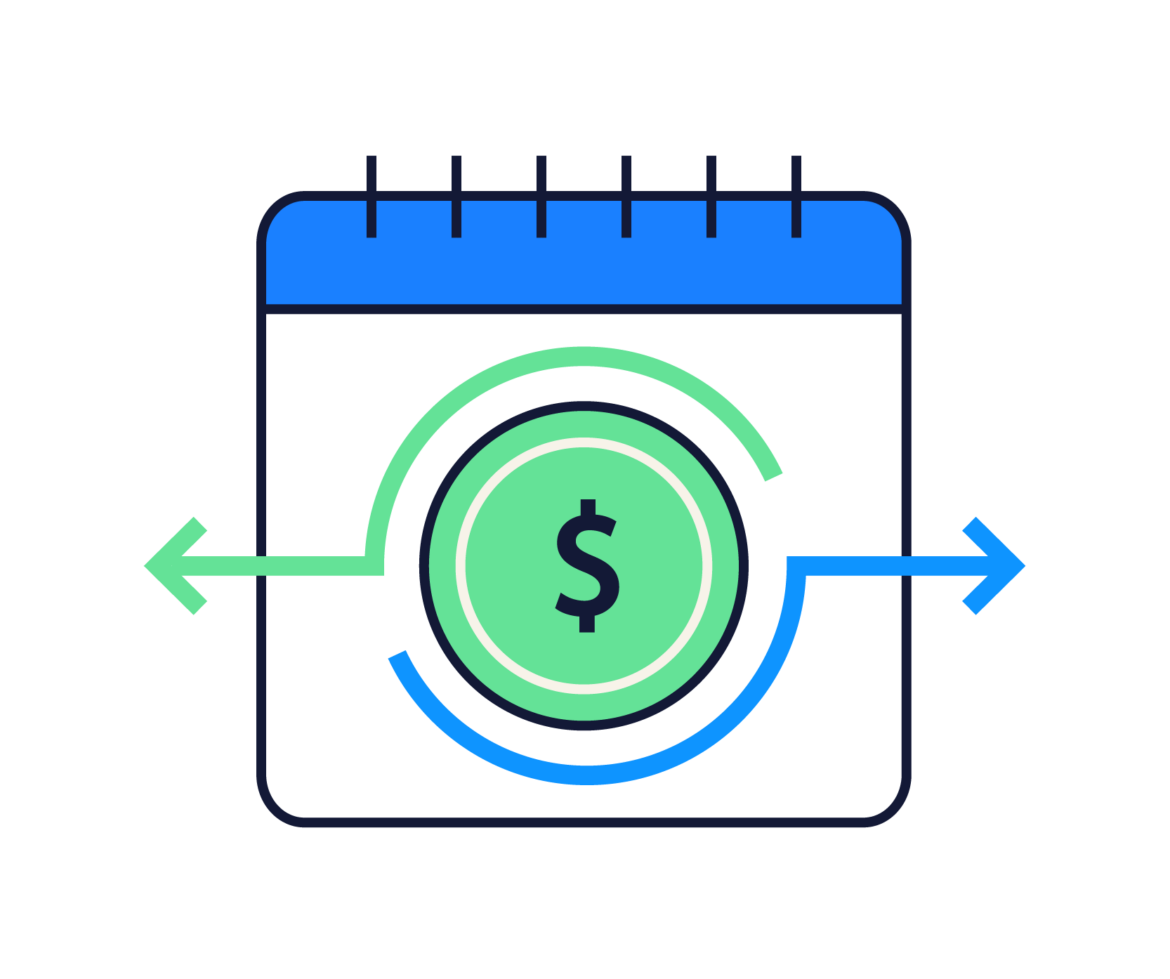Revenue Based Financing: Complete Guide to Financing with Future Receivables

Easy Application Process
Secure the Funds You Need for Your Business Growth
Need a business loan to fuel your growth?

Easy Application Process

Fast Approval Process

Flexible Repayment
Customized repayment plansto meet your needs.

Quick Funding
of approval!
What is Revenue Based Financing?
Revenue Based Financing is an innovative funding solution where businesses receive upfront capital in exchange for a predetermined percentage of future monthly revenue until a cap is reached (typically 1.2x to 3x the original investment). This alternative financing method has gained significant traction, with the RBF market growing over 300% in the past five years according to industry reports.
Unlike traditional debt financing, RBF payments fluctuate with your business performance. During strong months, you pay more; during slower periods, payments decrease proportionally. This built-in flexibility makes revenue based financing particularly attractive for businesses with seasonal fluctuations or variable cash flow.

Key Features of Revenue Based Financing:
- No equity dilution – maintain 100% ownership
- Flexible repayments based on revenue performance
- No personal guarantees or collateral required
- Quick approval process – typically 2-4 weeks
- Growth-aligned payments that scale with success
Revenue Based Financing for Small Business
Small business owners often struggle to access traditional financing due to limited credit history, lack of collateral, or stringent bank requirements. Revenue Based Financing for Small Business addresses these challenges by focusing on revenue potential rather than past credit performance.

Why Small Businesses Choose RBF:
Faster Access to Capital: Traditional bank loans can take 3-6 months for approval. Revenue based financing for small business typically provides funding within 2-4 weeks, allowing entrepreneurs to capitalize on time-sensitive opportunities.
Preserve Ownership: Unlike angel investors or venture capital, RBF doesn’t require giving up equity or board seats. Small business owners maintain complete control over strategic decisions.
Flexible Qualification: While banks may require perfect credit scores and extensive collateral, revenue based financing evaluates businesses based on recurring revenue streams, growth trajectory, and market opportunity.
Support Business Cycles: Seasonal businesses benefit significantly from RBF’s flexible payment structure. A landscaping company, for example, pays more during busy summer months and less during winter downtime.
Ideal Small Business Candidates for RBF:
- SaaS companies with monthly recurring revenue (MRR)
- E-commerce businesses with predictable sales patterns
- Subscription-based service providers
- Digital marketing agencies with retainer clients
- Professional services firms with recurring contracts
Revenue Based Financing for Businesses: Strategic Growth Applications
Revenue Based Financing for Businesses extends beyond traditional small business needs. Mid-sized companies and scaling startups use RBF strategically for specific growth initiatives without disrupting their capital structure.
Common Use Cases:
Marketing and Customer Acquisition: Businesses use RBF to fund aggressive marketing campaigns, knowing the increased revenue will cover repayments. A software company might invest in digital advertising to accelerate user acquisition.
Product Development: Technology companies leverage revenue based financing to fund new product lines or feature development, using projected revenue increases to justify the investment.
Inventory and Working Capital: E-commerce businesses use RBF for inventory purchases ahead of peak seasons, optimizing cash flow without traditional working capital loan restrictions.
Geographic Expansion: Companies expanding to new markets use revenue based financing to fund market entry costs, local hiring, and initial marketing investments.
Operational Scaling: Growing businesses invest in staff, equipment, or systems to handle increased demand, using RBF’s flexible structure to manage cash flow during scaling periods.
How Revenue Based Financing Works
Understanding the mechanics of revenue based financing helps businesses evaluate if this funding option aligns with their needs and growth plans.
The RBF Process:
- Application and Evaluation: Businesses apply with basic financial information, including revenue statements, cash flow projections, and business plans. Lenders evaluate based on recurring revenue, growth trends, and market opportunity rather than traditional credit metrics.
- Terms Negotiation: If approved, terms include:
- Funding amount (typically 2-12x monthly recurring revenue)
- Revenue percentage (usually 2-8% of monthly revenue)
- Repayment cap (total amount to be repaid, typically 1.2x-3x initial funding)
- Revenue floor (minimum monthly payment threshold)
- Funding Disbursement: Upon agreement, funds are typically disbursed within 48-72 hours via wire transfer or ACH.
- Ongoing Repayment: Monthly payments are automatically calculated based on actual revenue. Most RBF providers use accounting software integrations or monthly revenue reports for transparency.
- Completion: Once the repayment cap is reached, the agreement concludes with no ongoing obligations.
RBF Payment Example:
- Initial funding: $100,000
- Revenue percentage: 5%
- Repayment cap: $130,000 (1.3x)
- Monthly revenue: $50,000
- Monthly payment: $2,500 (5% of $50,000)
If revenue drops to $30,000, payment becomes $1,500. If revenue grows to $80,000, payment increases to $4,000.
Benefits and Drawbacks of Revenue Based Financing

Benefits:
Preserved Equity: Maintain complete ownership and control of your business while accessing growth capital.
Flexible Payments: Payments adjust with revenue performance, providing natural cash flow protection during slower periods.
Speed to Funding: Significantly faster approval and funding compared to traditional loans or equity raises.
No Personal Guarantees: Most RBF agreements don’t require personal guarantees or business assets as collateral.
Growth-Friendly: Payments scale with success, aligning lender and business interests for mutual benefit.
Less Dilutive Than Equity: While more expensive than traditional debt, RBF is typically less dilutive than giving up 10-20% equity to investors.
Potential Drawbacks:
Higher Cost of Capital: RBF can be more expensive than traditional bank loans, with effective annual rates ranging from 10-30%.
Revenue Sharing: Giving up a percentage of revenue means less cash available for other business needs during the repayment period.
Limited Funding Amounts: RBF amounts are typically tied to revenue multiples, potentially limiting funding for businesses needing larger capital injections.
Revenue Requirements: Businesses must have consistent, predictable revenue streams to qualify and service payments.
Revenue Based Financing vs. Other Financing Options
RBF vs. Traditional Bank Loans
Traditional Bank Loans:
- Fixed monthly payments regardless of revenue performance
- Require strong credit scores (typically 680+) and collateral
- Lower interest rates (6-12%) but stricter qualification requirements
- Lengthy approval process (30-90 days)
- Personal guarantees often required
Revenue Based Financing:
- Flexible payments tied to revenue performance
- Focus on revenue potential over credit history
- No collateral or personal guarantees required
- Faster approval (2-4 weeks)
- Higher cost of capital but greater accessibility
RBF vs. Equity Financing
Equity Financing:
- Investors receive ownership stake (10-30% typically)
- Large funding amounts possible ($500K-$10M+)
- Investors may require board seats or strategic input
- Suitable for high-growth, scalable businesses
- Potential for significant dilution over multiple rounds
Revenue Based Financing:
- No equity dilution – maintain 100% ownership
- Moderate funding amounts (typically $50K-$2M)
- No investor involvement in business operations
- Fixed repayment cap provides certainty
- Ideal for profitable, growing businesses
RBF vs. Venture Capital
According to the National Venture Capital Association, less than 1% of businesses receive venture capital funding. Revenue based financing fills this gap by providing growth capital to profitable businesses that don’t fit VC criteria.
Venture Capital:
- Extremely selective (less than 1% acceptance rate)
- Requires exceptional growth potential (10x+ returns)
- Significant equity dilution (20-40% per round)
- Investor oversight and board participation
- Exit pressure (IPO or acquisition within 5-10 years)
Revenue Based Financing:
- More accessible approval process
- Moderate growth expectations
- No equity given up
- Business maintains full autonomy
- No exit requirements or timeline pressure
RBF vs. Lines of Credit
Business Lines of Credit:
- Lower interest rates when funds are used
- Revolving credit that can be reused
- Requires strong credit profile and banking relationships
- May require collateral for larger amounts
- Variable interest rates subject to market changes
Revenue Based Financing:
- Lump sum funding for specific growth initiatives
- Fixed repayment terms with predictable costs
- Revenue-based qualification criteria
- One-time funding with clear end date
- Payments scale with business performance
Step-by-Step Guide: How to Apply for Revenue Based Financing
Step 1: Assess Your Business Readiness
Before applying for Revenue Based Financing, evaluate your business against key criteria:
- Monthly Recurring Revenue: Minimum $10,000-$50,000 MRR depending on lender
- Revenue Growth: Consistent growth trajectory over 6-12 months
- Business Model: Recurring revenue streams preferred (subscriptions, contracts, retainers)
- Financial Records: Clean bookkeeping with 12+ months of revenue history
- Market Position: Defensible market position with clear competitive advantages
Step 2: Prepare Required Documentation
Gather essential documents for your RBF application:
Financial Statements:
- Profit & Loss statements (12-24 months)
- Cash flow statements showing revenue patterns
- Balance sheet (most recent)
- Bank statements (3-6 months)
- Accounts receivable aging reports
Business Documentation:
- Business plan or executive summary
- Revenue projections and growth assumptions
- Customer concentration analysis
- Key performance indicators (KPIs)
- Marketing and sales strategy overview
Legal Documents:
- Business registration and licenses
- Major customer contracts or agreements
- Intellectual property documentation
- Insurance policies
Step 3: Research and Select RBF Providers
Not all revenue based financing providers are created equal. Consider factors such as:
Funding Criteria:
- Minimum and maximum funding amounts
- Required monthly revenue thresholds
- Industry preferences and restrictions
- Geographic limitations
Terms and Costs:
- Revenue percentage rates (2-8% typical)
- Repayment caps (1.2x-3x multiples)
- Fee structures and additional costs
- Repayment timeline expectations
Provider Reputation:
- Track record with similar businesses
- Customer reviews and testimonials
- Industry expertise and support services
- Transparency in terms and processes
Step 4: Submit Your Application
Most RBF applications can be completed online in 30-60 minutes. The process typically includes:
- Basic Business Information: Company details, founding date, industry, location
- Financial Performance: Revenue figures, growth rates, profit margins
- Funding Request: Desired amount, intended use of funds, repayment preferences
- Document Upload: Financial statements, bank statements, supporting documents
- Banking Connection: Secure connection to verify revenue and cash flow patterns
Step 5: Due Diligence and Underwriting
Once submitted, the RBF provider conducts comprehensive due diligence:
Financial Analysis: Review of revenue trends, seasonality, customer concentration, and growth sustainability.
Business Model Evaluation: Assessment of recurring revenue quality, customer retention, and market position.
Risk Assessment: Analysis of industry trends, competitive landscape, and potential challenges.
Terms Determination: Based on evaluation, providers propose funding amount, revenue percentage, and repayment cap.
Step 6: Term Sheet Review and Negotiation
If approved, you’ll receive a term sheet outlining:
- Funding Amount: Total capital to be provided
- Revenue Share Percentage: Monthly percentage of gross revenue
- Repayment Cap: Maximum total amount to be repaid
- Payment Schedule: Monthly payment calculation and timing
- Reporting Requirements: Ongoing revenue reporting obligations
- Use of Funds: Restrictions or guidelines for fund usage
Take time to review terms carefully and negotiate where appropriate. Consider engaging a financial advisor or attorney for complex agreements.
Step 7: Final Documentation and Funding
Upon term sheet acceptance:
- Legal Documentation: Execution of final financing agreements
- Account Setup: Establishment of payment processing and reporting systems
- Funding Disbursement: Transfer of funds (typically within 48-72 hours)
- Ongoing Relationship: Implementation of reporting and payment procedures
Tips to Improve Your Revenue Based Financing Approval Chances
Demonstrate Strong Revenue Metrics
Consistent Growth: Show month-over-month revenue growth over at least 6-12 months. Even modest but consistent growth (5-10% monthly) is more attractive than volatile performance.
High Revenue Quality: Emphasize recurring revenue streams. Subscription businesses, retainer-based services, and contract-based revenue models are preferred over one-time transactions.
Customer Diversification: Avoid excessive concentration risk. No single customer should represent more than 10-15% of total revenue for optimal approval odds.
Predictable Revenue: Demonstrate forecasting accuracy by showing past projections versus actual results. This builds confidence in future revenue predictions.
Optimize Financial Presentation
Clean Bookkeeping: Ensure accurate, up-to-date financial records using professional accounting software like QuickBooks, Xero, or similar platforms.
Positive Unit Economics: Clearly show customer acquisition costs (CAC), lifetime value (LTV), and positive contribution margins. A LTV/CAC ratio of 3:1 or higher is ideal.
Cash Flow Management: Demonstrate effective cash flow management with positive operating cash flow and reasonable cash reserves.
Profit Margins: While not required, positive EBITDA margins strengthen applications and may result in better terms.
Showcase Business Fundamentals
Market Opportunity: Present clear market size and growth opportunity data from reputable sources like IBISWorld, Statista, or industry associations.
Competitive Advantage: Articulate unique value propositions, barriers to entry, or intellectual property that differentiate your business.
Management Team: Highlight relevant experience, past successes, and industry expertise of key leadership team members.
Customer Retention: High retention rates (90%+ for SaaS, 80%+ for other models) indicate strong product-market fit and revenue sustainability.
Prepare for Due Diligence
Documentation Organization: Organize all financial and legal documents in easily accessible formats. Consider using virtual data rooms for complex applications.
Reference Preparation: Prepare customer references, vendor relationships, and professional references who can speak to your business performance and character.
Growth Plan Clarity: Articulate specific uses for RBF funding with clear ROI projections and timeline expectations.
Risk Mitigation: Address potential risks proactively with contingency plans and risk mitigation strategies.
Work with Experienced Partners
Financial Advisors: Consider working with advisors experienced in alternative financing to help structure your application and negotiate terms.
Legal Counsel: Engage attorneys familiar with RBF agreements to review terms and protect your interests.
Accounting Support: Ensure your accounting practices meet institutional standards and can support ongoing reporting requirements.
Frequently Asked Questions About Revenue Based Financing
What is Revenue Based Financing and how does it work?
Revenue Based Financing is a funding method where businesses receive upfront capital in exchange for a percentage of future monthly revenue until a predetermined cap is reached. Unlike traditional loans with fixed payments, RBF payments fluctuate with your business performance—when revenue increases, payments increase; when revenue decreases, payments decrease proportionally. This creates a natural cash flow cushion during slower periods while allowing lenders to participate in your business growth.
Who qualifies for Revenue Based Financing Small Business funding?
Revenue Based Financing Small Business funding is ideal for businesses with consistent monthly recurring revenue (typically $10,000+ MRR), demonstrated growth trajectory, and predictable cash flows. Qualifying businesses often include SaaS companies, subscription services, e-commerce businesses, digital marketing agencies, and professional service firms with retainer clients. Unlike traditional loans, RBF providers focus more on revenue potential than credit scores, making it accessible to businesses that might not qualify for bank financing.
How much can I borrow with Revenue Based Financing for Businesses?
Revenue Based Financing for Businesses typically provides funding ranging from 2-12 times your monthly recurring revenue, with most providers offering $50,000 to $2 million. The exact amount depends on factors including monthly revenue consistency, growth rate, profit margins, customer concentration, and industry type. Established businesses with strong revenue patterns and diversified customer bases can often secure larger amounts and more favorable terms.
What are the costs associated with Revenue Based Financing?
RBF costs typically include a revenue share percentage (2-8% of monthly revenue) and a repayment cap (1.2x-3x the original funding amount). For example, if you receive $100,000 with a 5% revenue share and 1.5x cap, you’ll pay 5% of monthly revenue until reaching $150,000 in total payments. The effective annual rate varies based on how quickly you repay, but generally ranges from 10-30%. While higher than traditional bank loans, RBF offers greater flexibility and accessibility.
How does Revenue Based Financing compare to traditional business loans?
Revenue Based Financing offers several advantages over traditional business loans: flexible payments that scale with revenue, no collateral requirements, faster approval (2-4 weeks vs. 2-3 months), and no personal guarantees. Traditional loans offer lower interest rates but require strong credit, collateral, and have fixed payments that don’t adjust to business performance. RBF is particularly beneficial for growing businesses with variable revenue streams or those that don’t qualify for conventional financing.
What industries work best with Revenue Based Financing?
Revenue Based Financing works best for industries with predictable, recurring revenue streams. Top industries include Software-as-a-Service (SaaS), subscription businesses, e-commerce, digital marketing agencies, managed service providers, healthcare services, education technology, and professional services. According to industry data, SaaS companies represent approximately 40% of RBF recipients due to their recurring revenue models and high growth potential.
How long does the Revenue Based Financing application process take?
The Revenue Based Financing application process typically takes 2-4 weeks from initial application to funding. This includes initial review (2-3 days), due diligence and underwriting (1-2 weeks), term sheet negotiation (2-5 days), and final documentation and funding (2-3 days). This is significantly faster than traditional bank loans, which can take 30-90 days, making RBF ideal for businesses needing quick access to growth capital.
Can I get Revenue Based Financing with bad credit?
Yes, Revenue Based Financing is often available to businesses with less-than-perfect credit because lenders focus primarily on revenue performance rather than credit scores. While credit history is considered, it’s not the primary determining factor. Businesses with strong revenue growth, consistent cash flows, and solid business fundamentals can often secure RBF even with credit challenges. However, better credit may result in more favorable terms and lower revenue share percentages.
Internal Resources and Next Steps
To better understand how Revenue Based Financing fits within your overall financing strategy, explore these related funding options:
Small Business Loans – Compare RBF with traditional lending options and find the right fit for your business needs.
Working Capital Loans – Understand how working capital financing can complement revenue-based funding for operational needs.
Term Loans – Explore fixed-payment alternatives for businesses preferring predictable repayment schedules.
Equipment Financing – Learn about asset-based financing for specific equipment and machinery purchases.
Microloans – Consider smaller funding amounts for early-stage businesses or specific growth initiatives.
For additional business financing guidance and resources, visit the Small Business Administration website, which provides comprehensive information about various funding options, eligibility requirements, and application processes.
Get Started with Revenue Based Financing Today
Revenue Based Financing represents a powerful funding solution for businesses seeking growth capital without equity dilution or the constraints of traditional loans. Whether you’re a small business owner looking to expand operations, a SaaS company needing marketing capital, or an established business planning strategic initiatives, RBF offers the flexibility and speed you need.
At Clear Skies Capital, we specialize in connecting businesses with the right Revenue Based Financing solutions. Our streamlined process, experienced team, and extensive lender network ensure you get competitive terms tailored to your specific business needs.
Ready to explore Revenue Based Financing for your business?
Apply Now – Complete our quick online application and get pre-qualified in minutes
Free Consultation – Schedule a no-obligation consultation with our financing experts
Get Information – Contact us at [financing@clearskiescapital.com] for personalized guidance
Don’t let limited access to capital slow your business growth. Discover how Revenue Based Financing can provide the flexible funding solution your business needs to thrive in today’s competitive marketplace.
Contact Clear Skies Capital today and take the first step toward securing the capital that will drive your business success.